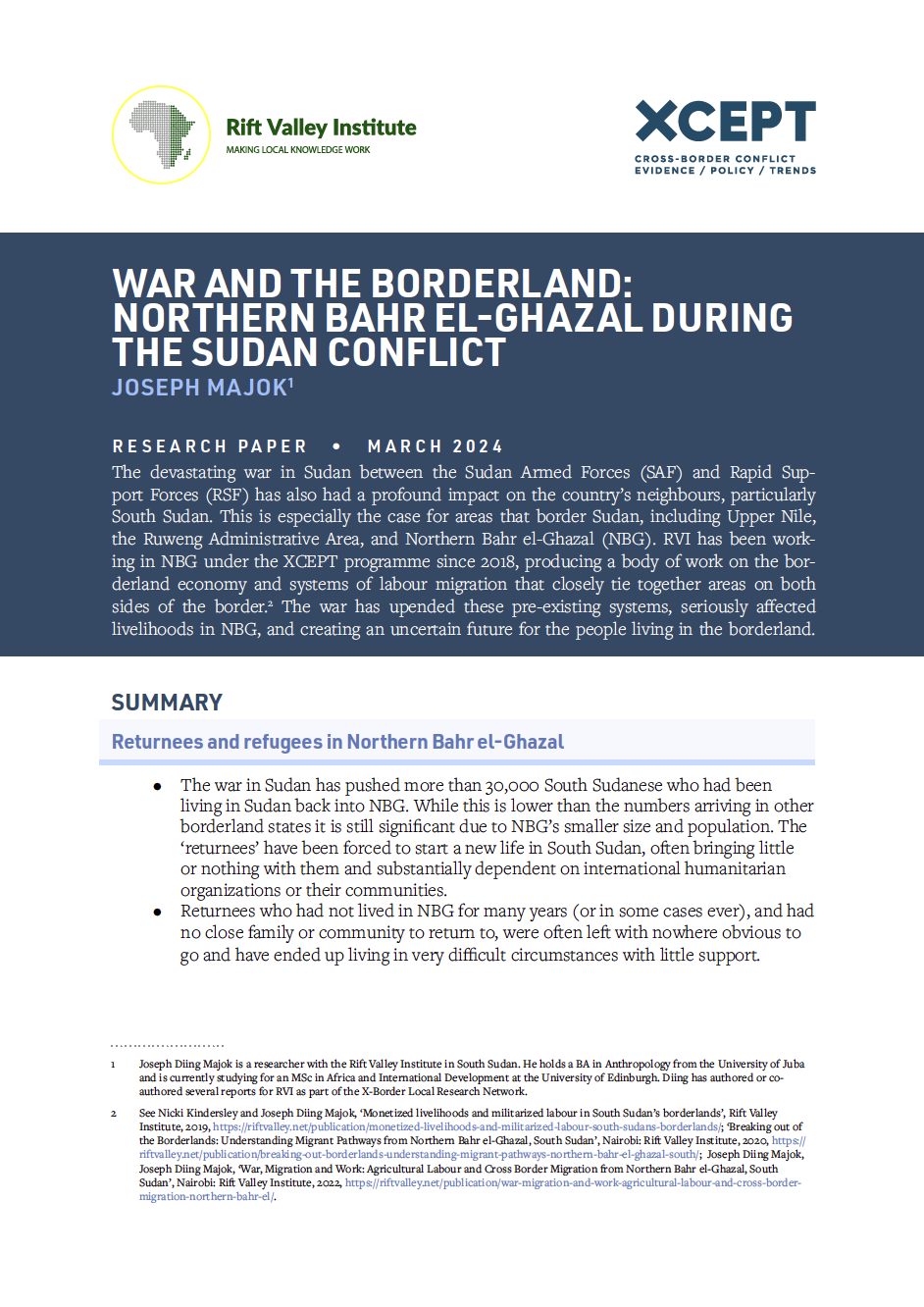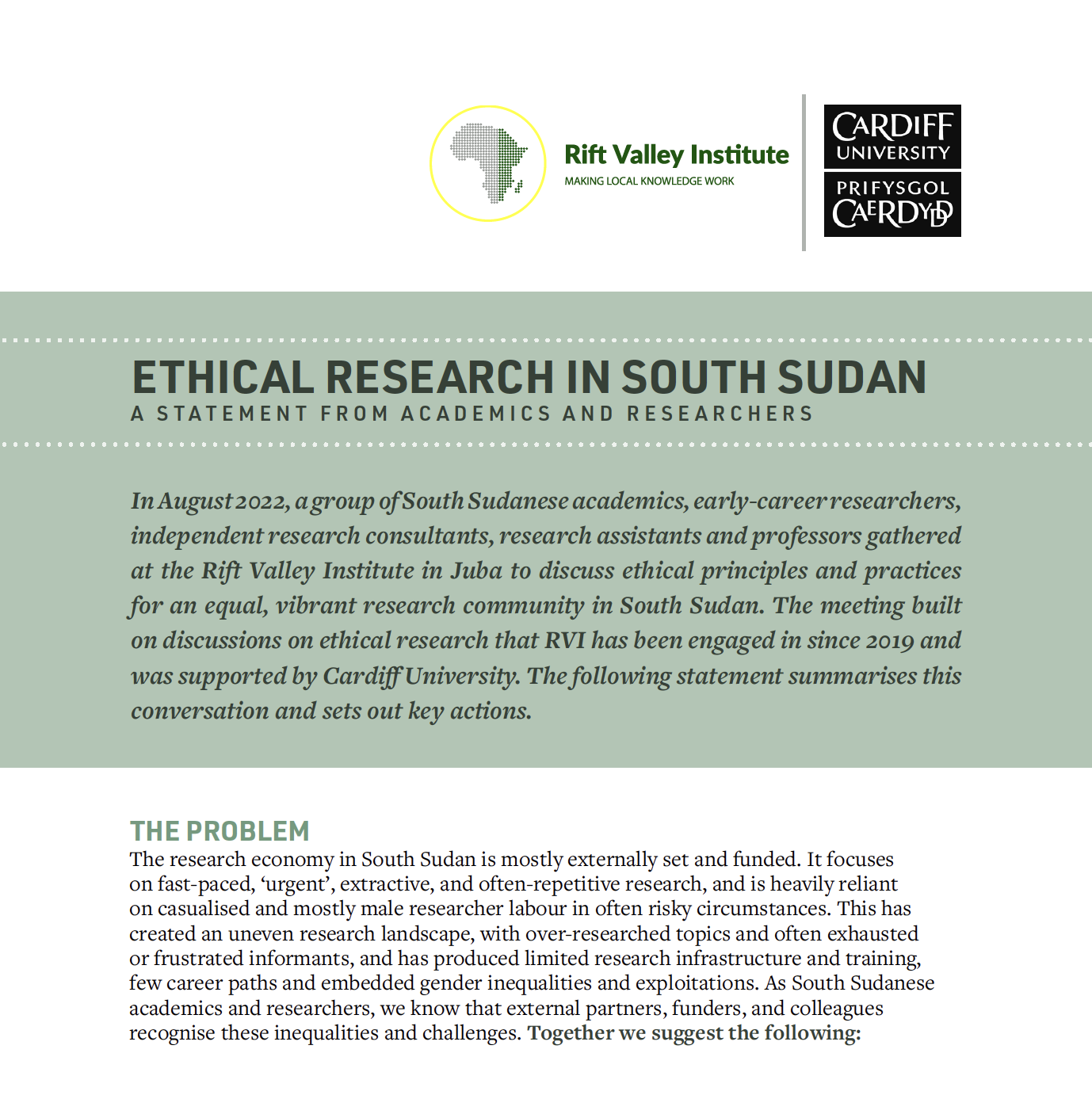South Sudan’s healthcare system faces significant challenges, particularly in rural areas where access to clinical services is limited and costly. Many South Sudanese turn to traditional healers who use herbal medicines and spiritual methods due to a lack of…
RVI publishes books, research reports, research papers, briefings and meeting reports in a range of formats. Publications cover policy, research, arts, culture and local knowledge in the countries of eastern and central Africa. Research publications—books, reports and papers—are peer-reviewed. Some RVI publications are also available in French and/or Arabic.
The RVI is a signatory of the Budapest Open Access Initiative (2001); all publications are free for download in PDF format under Creative Commons licences. The views expressed in books and reports published by the RVI are those of the authors, not the Institute.
SEARCH
PUBLICATION TYPE
LANGUAGE
REGION
COUNTRY

- By Marlin John Serefino
- Download
This blog explores traditional narratives of South Sudanese on climate change, their lived experiences, as well as perceptions on appropriate responses to the impacts of climate change. Introduction This blog is about traditionally oriented perceptions of climate change in Juba…

- By Maketh Deng
- Download
In this blog, Maketh traces the roots of intercommunal conflicts in Lakes State, South Sudan to the legacies of war, dowry demands and climate change, and subsequently calls for reconciliation processes and skills training in order to mitigate the…
EXECUTIVE SUMMARY Putting good governance into effect in the nascent state of South Sudan has proven to be a nightmare, largely due to the presence of recalcitrant public institutions where public affairs and resources are unethically executed, undermining other…
The devastating war in Sudan between the Sudan Armed Forces (SAF) and Rapid Support Forces (RSF) has also had a profound impact on the country’s neighbours, particularly South Sudan. This is especially the case for areas that border Sudan,…
UNDERSTANDING THE LOSS OF ELEPHANTS IN SOUTH SUDAN Introduction Elephants are iconic animals in South Sudan, featuring on bank notes and state flags and in many myths and sayings. ‘When the elephants fight, the grass suffers’ is one example…
In August 2022, a group of South Sudanese academics, early-career researchers, independent research consultants, research assistants and professors gathered at the Rift Valley Institute in Juba to discuss ethical principles and practices for an equal, vibrant research community in…

- Download
In 2021 RVI celebrated the 20-year anniversary of its founding in southern Sudan in 2001. As part of these celebrations, we decided to produce an Anthology of our published work over the last two decades: 20 chapters to mark…
SUMMARY At its signing in October 2020, it was hoped that the Juba Peace Agreement (JPA) would finally address the root causes of the conflicts in Sudan. Three years later, it is clear that the most important legacy of…
SUMMARY Sudan’s economy is based on resources that have been exploited via violence rather than through peaceful, sustainable means. As a result, those who have benefited are those who control the means of violence. Furthermore, the inequalities in wealth,…
Recent Publications

EWNET Writes: Writing Workshop Session I
December 18, 2025
The Ethiopian Women Researchers Network (EWNET) inaugural writing workshop series aims to not only provide women researchers with uninterrupted time for their scholarly projects, but also build a supportive academic community. The first session, entitled ‘EWNET Writes: Writing Workshop Session

SSC-Khaatumo: Perspectives on the significance and implications of its formation
December 12, 2025
On 15 April 2025, during a visit to the city of Las Anod in Sool, Prime Minister Hassan Abdi Barre officially declared the federal government’s recognition of SSC-Khaatumo (SSC-K hereafter) as a federal member state, marking an important milestone in

Aid and Conflict Sensitivity in Contemporary Ethiopia
November 17, 2025
This study assesses conflict sensitivity practices among humanitarian, development and peacebuilding (HDP) actors in Ethiopia. It seeks to raise awareness and foster a deeper understanding of the evolving aid landscape in the country while analysing the challenges that affect conflict-sensitive







